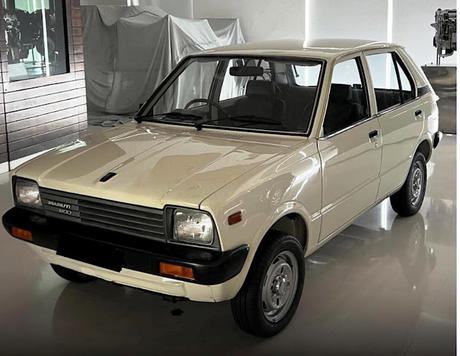In mid 1970s, there were handful cars in Triplicane – couple of Ambassadors and Fiats.Even two-wheeled motor-cycles were rare – some owned Jawa with pride, some Rajdoots and very few Enfield Bullets; there were of course Lambretta, Bajaj & Vijay scooters.
Ambassaddor was the standard car (ran as Taxis); there were Standard 10s, Fiat had vanished to become Premier Padmini, Chevrolet and Morris Minor ran as janvasam vehicles.
Common men relied on public transport and some had bicycles at home.There would be Taxi stands with Fiats & Ambassadors who would charge so high for a drop atRailway station.It was at this juncture, advertisements about a small car affordable to common man came !! The market response was somewhat predictable. First, disbelief — it just cannot be done. It’s impossible. It’s out of the question. It’s technically not possible.
In the early 80s when Sanjay Gandhi conceptualized Maruti, perhaps it was an attempt exploring ‘the fortune at the bottom of the pyramid’, i.e., that there is purchasing power and demand at the lowest income levels of society and this is a fortune to be made if products are designed creatively at low cost and sold at low prices.The need for cars grew rapidly in the 80s and Maruti Suzuki cashed on this opportunity by launching the company around the same time.

Maruti Suzuki India Limited is a publicly listed Indian subsidiary of Japanese automaker Suzuki Motor Corporation. Maruti opened its first production facility in Gurugram, Haryana, in 1982. Initially, Maruti was majority owned by the Indian government, with Suzuki only taking a 26% stake during its establishment in 1982. The Indian government gradually reduced its stake, partially departed the business in 2003 by making it a public company and then sold all of its remaining shares to Suzuki Motor Corporation in 2007, is history !
Launched as Maruti Udyog Ltd., Suzuki business model changed a year later in Oct 1982, when Maruti Udyog signed the license and a joint venture agreement with Suzuki Motor Corporation. Soon after the agreement, Maruti Suzuki cars started its production in 1983. The first car that Maruti Suzuki launched and created history with was the Maruti 800. The car was so affordable that it instantly became popular. Even now, after so many years, you might spot this car on the Indian roads.
1986 was a milestone year for the company. Its service across the country was increasing and the company had successfully manufactured its 100,000th vehicle in the same year as well. They also launched the new and powerful Suzuki Alto (SS80), a 796 cc hatchback, replacing the former Maruti 800 model. It also began its foreign export and shipped a lot of 500 cars to Hungary.

The news is - Osamu Suzuki, the man who took a risk and bet on India when no one else believed in having a viable automobile company in the country, has died at the age of 94, according to information shared by Japan’s Suzuki Motor Corporation.He passed away on December 25 due to malignant lymphoma, the company said. Suzuki, who took the risk of partnering with the then Indian government to form a joint venture — Maruti Udyog Ltd in 1981, at a time when India was still a closed economy under a license regime, is widely regarded as the man who spurred the automotive industry in the country.

“Without his vision and foresight, his willingness to take a risk that no one else was willing to take, his deep and abiding love for India, and his immense capabilities as a teacher, I believe the Indian automobile industry could not have become the powerhouse that it has become,” Maruti Suzuki India Ltd (MSIL) Chairman, R C Bhargava said on the passing of Suzuki.Noting Suzuki’s contribution to India, he said, “Millions of us in this country are living better lives because of Osamu San.” He further said, “Osamu San’s contribution to the Indian economy, and for building bridges between India and Japan was acknowledged by the conferment of the Padma Bhushan on him.”
In a separate statement, MSIL said, “O Suzuki was a visionary leader whose remarkable contributions shaped the global automobile industry.” With his vision, O Suzuki played the pivotal role in realising the dream of putting India on wheels by empowering millions of Indian families with affordable, reliable, efficient and good quality vehicles.”
Born on January 30, 1930, Suzuki graduated from the Faculty of Law, Chuo University and joined the then Suzuki Motor Co Ltd in April 1958. He was appointed as Director in November 1963 and in December 1967 became Director and Managing Director. He became Chairman of Suzuki Motor Corporation in June 2000. In June 2021, he was appointed as Senior Advisor with his eldest son Toshihiro Suzuki taking over the reins.
Homage to the automobile doyen Osamu SuzukiRegards – S Sampathkumar
28.12.2024

